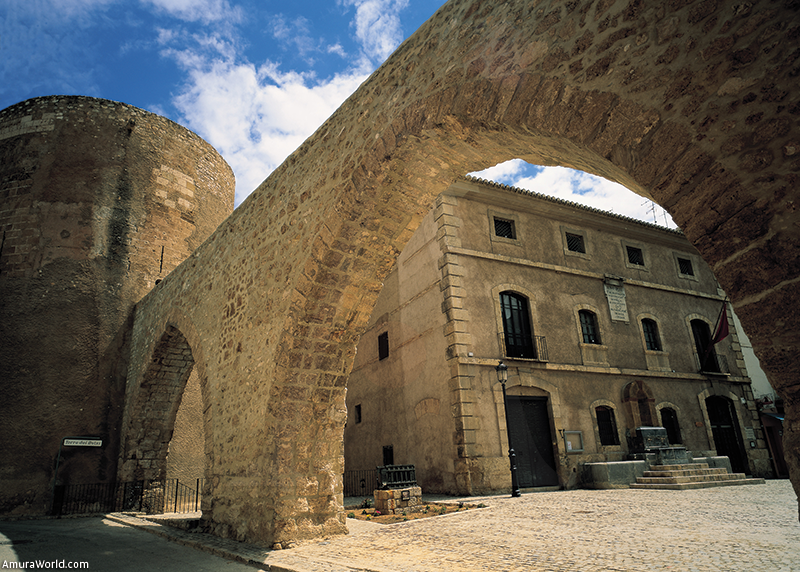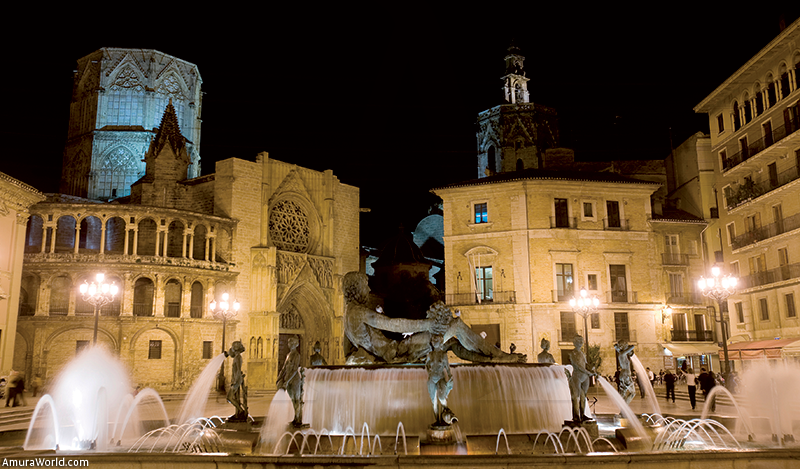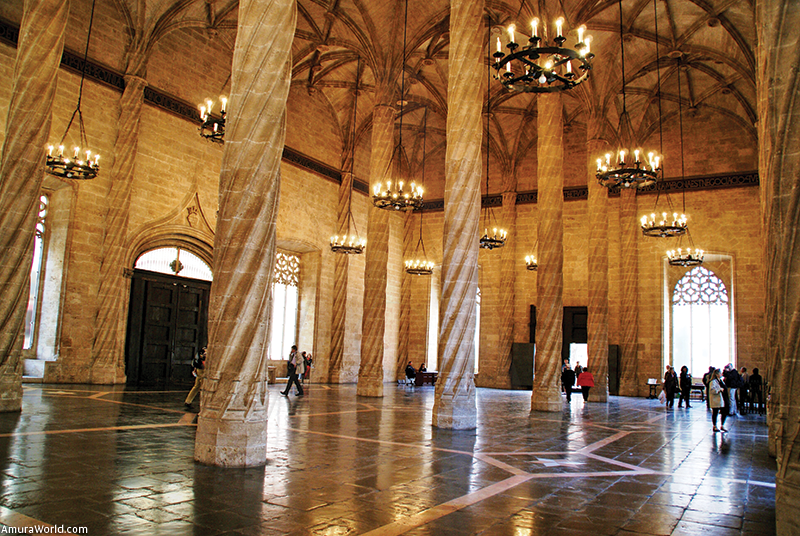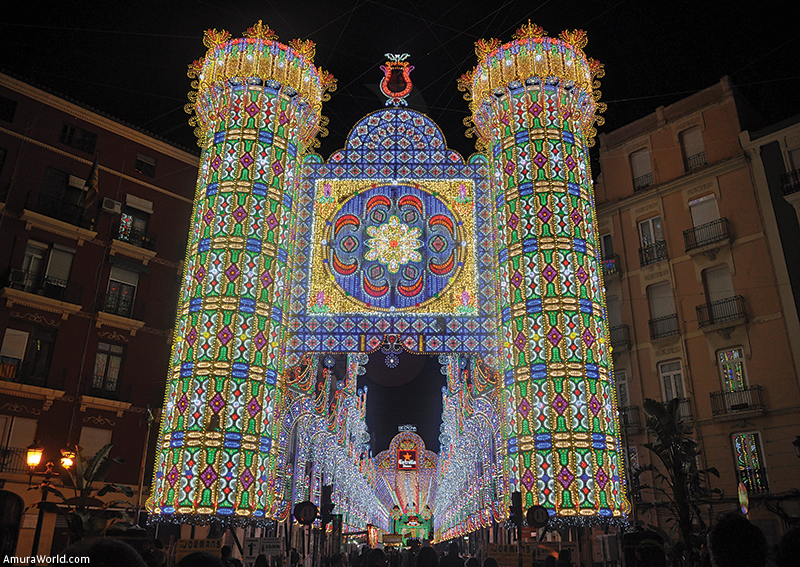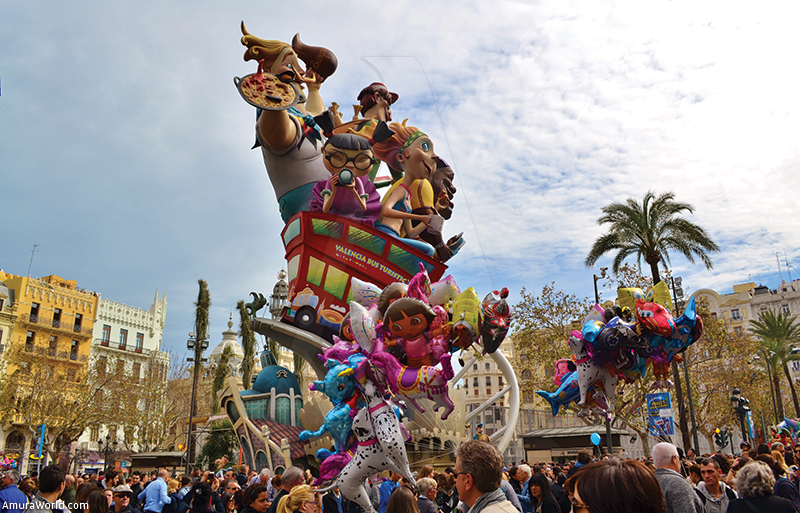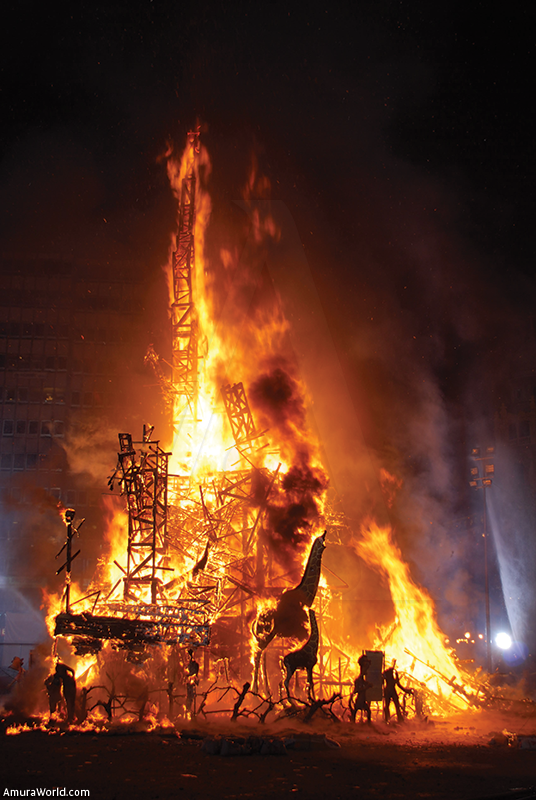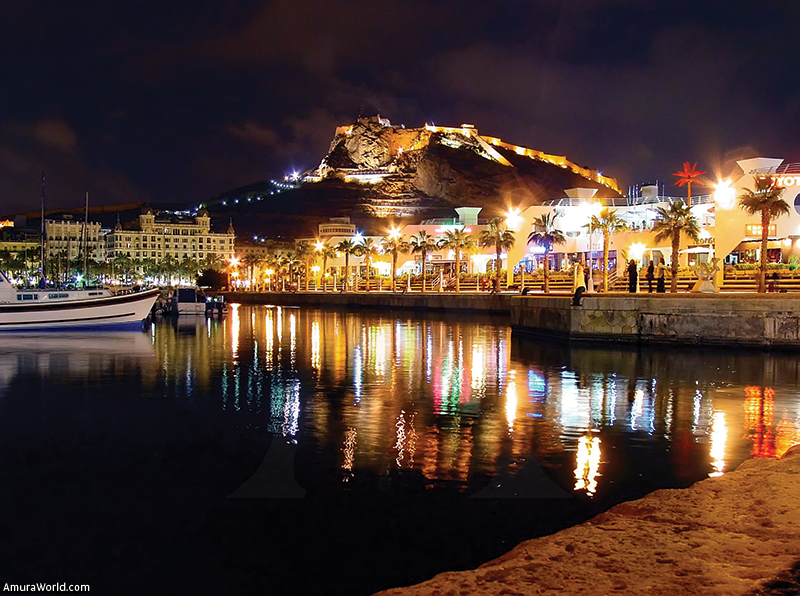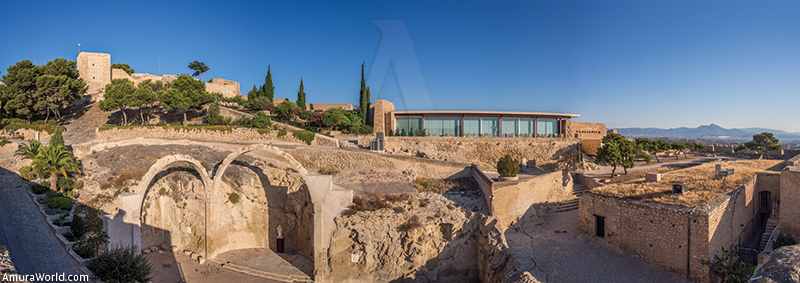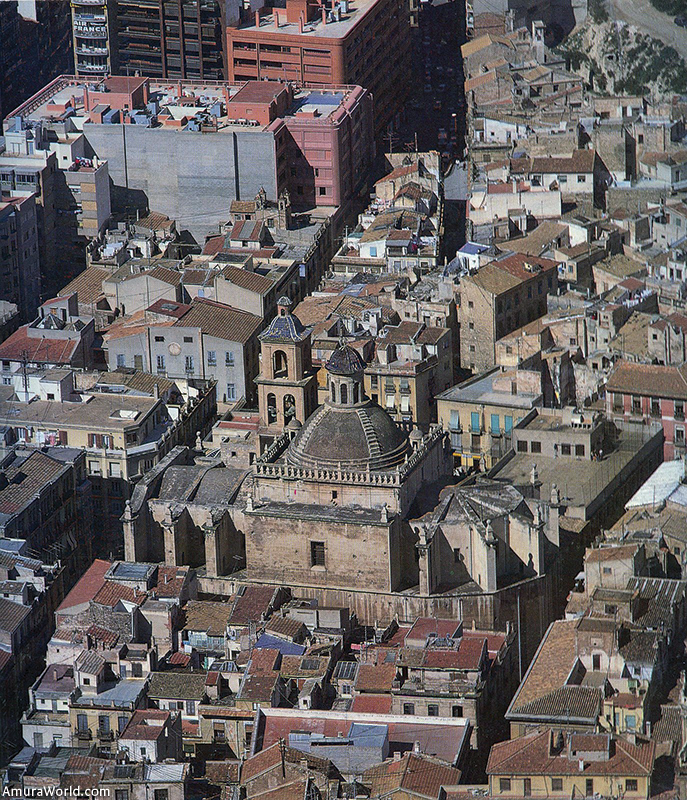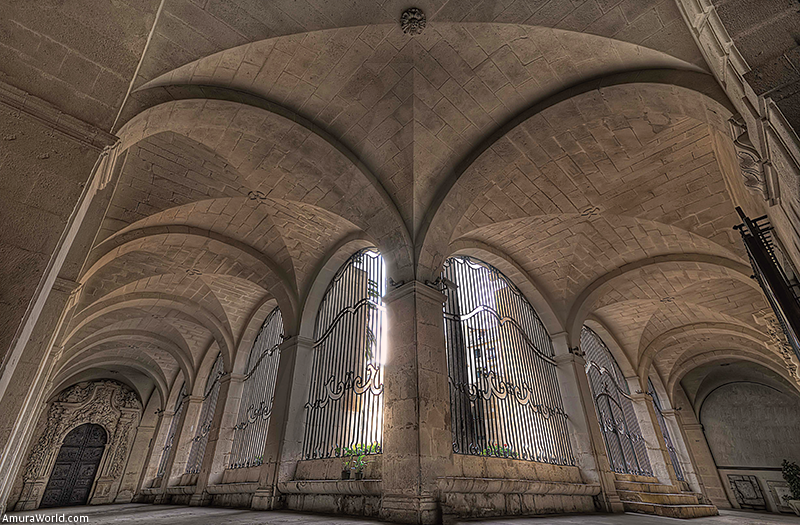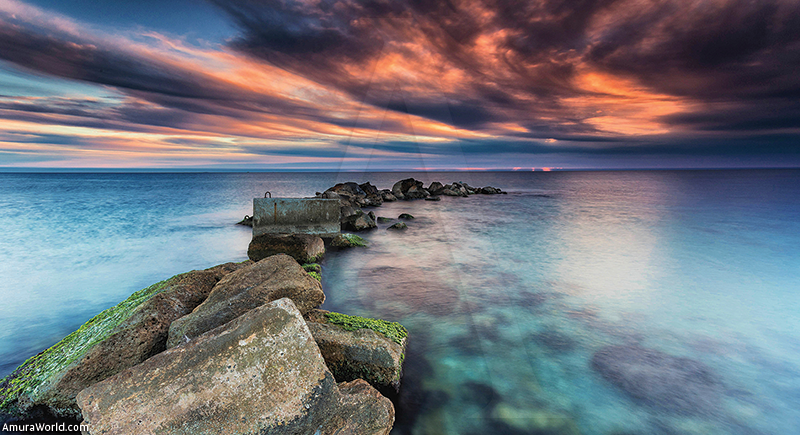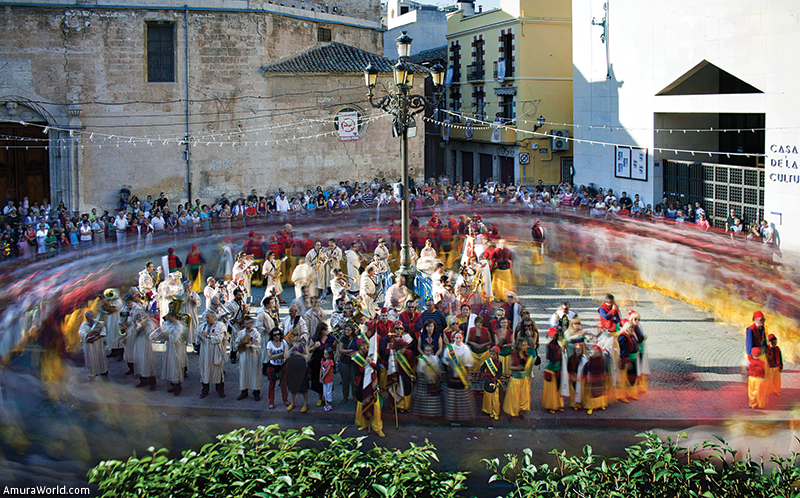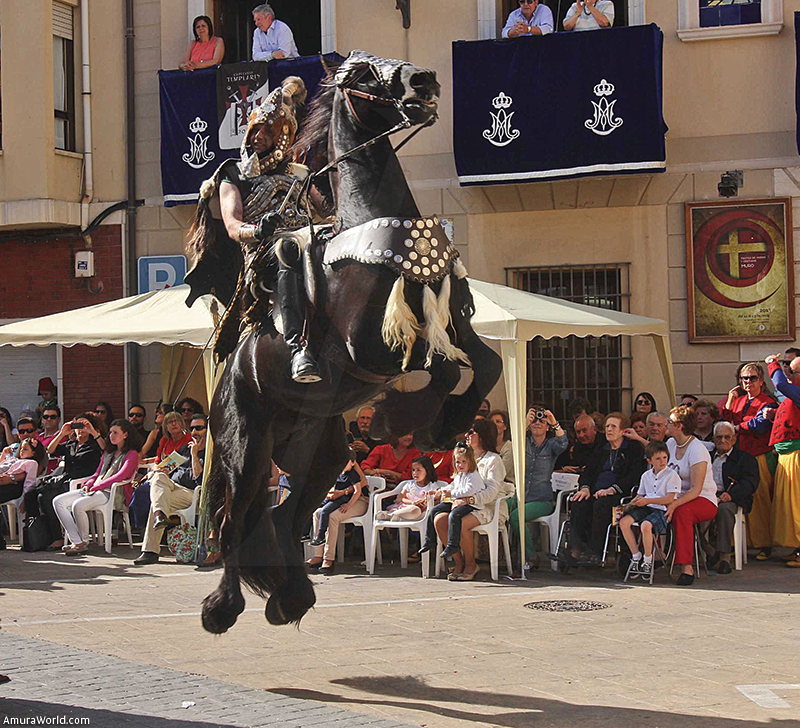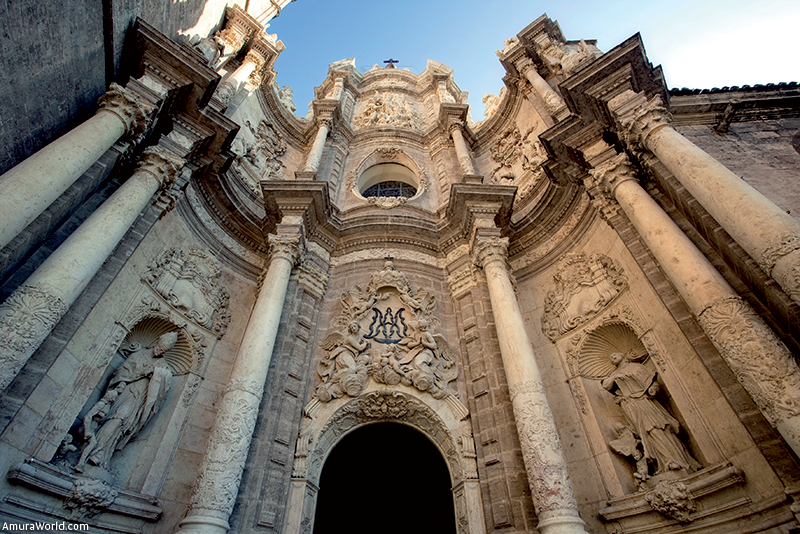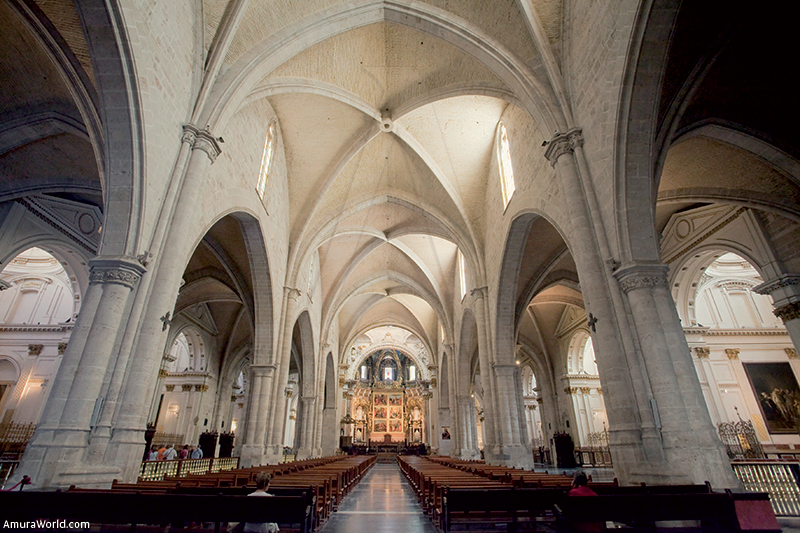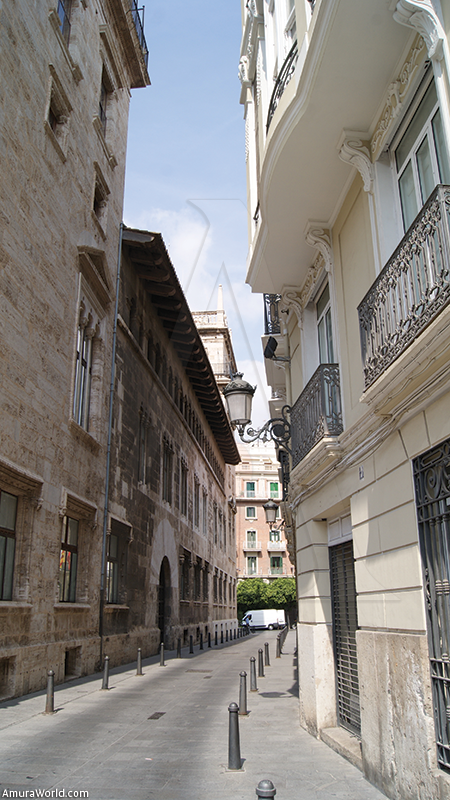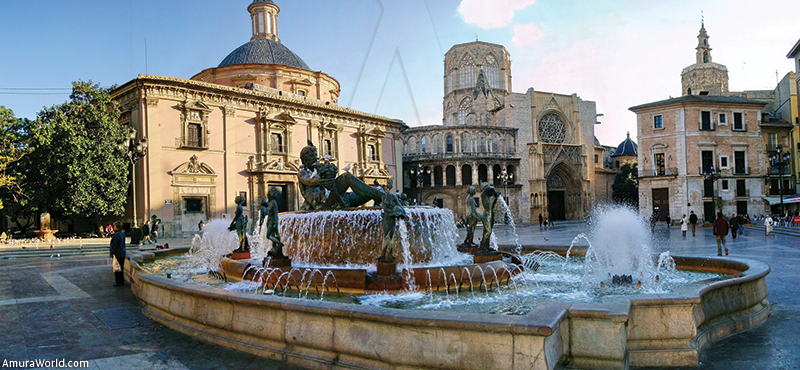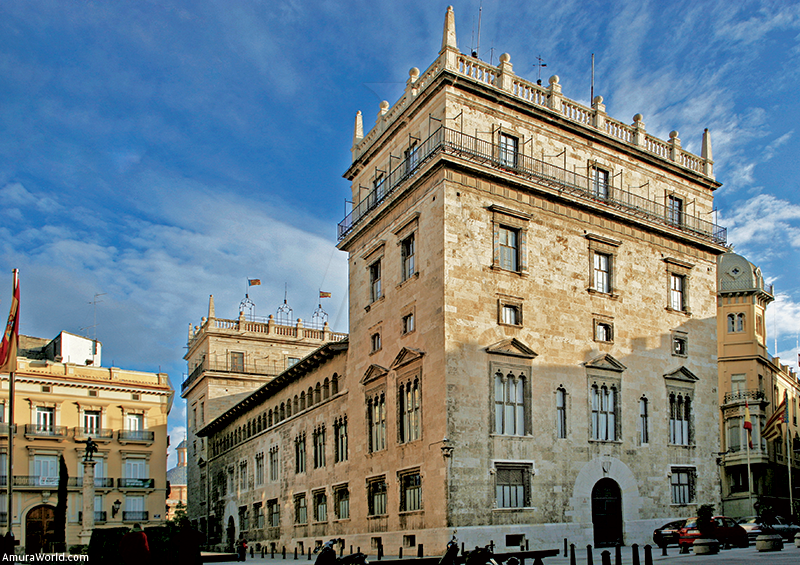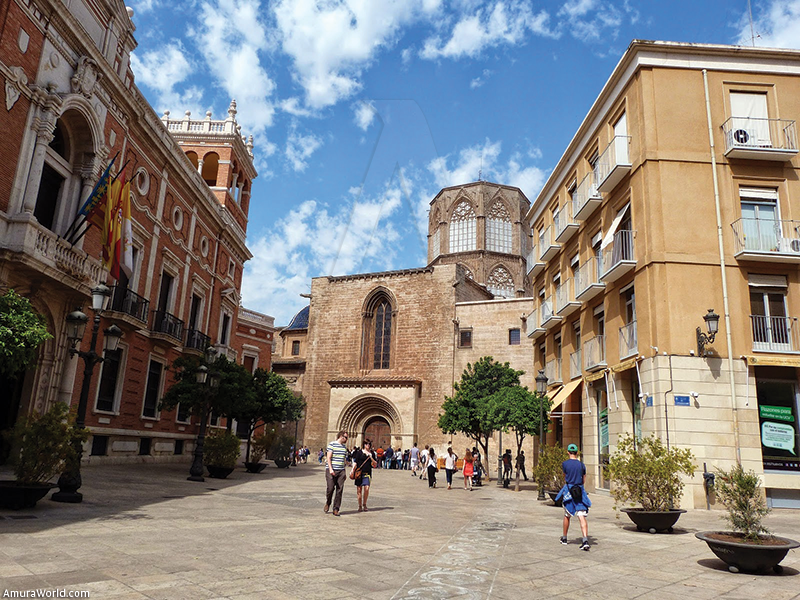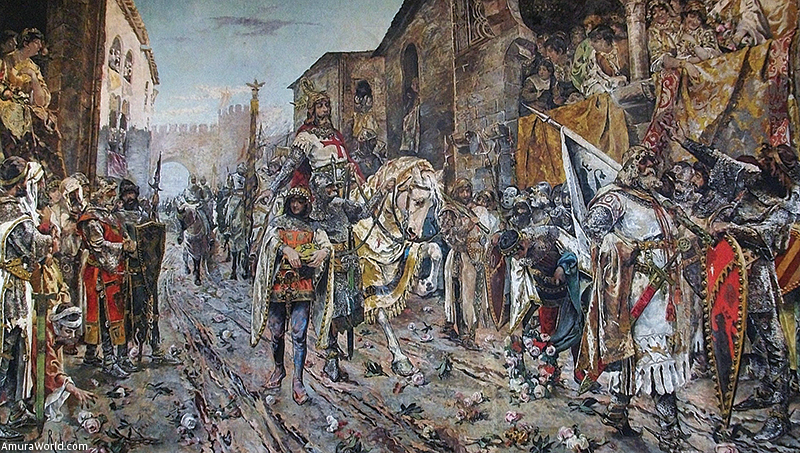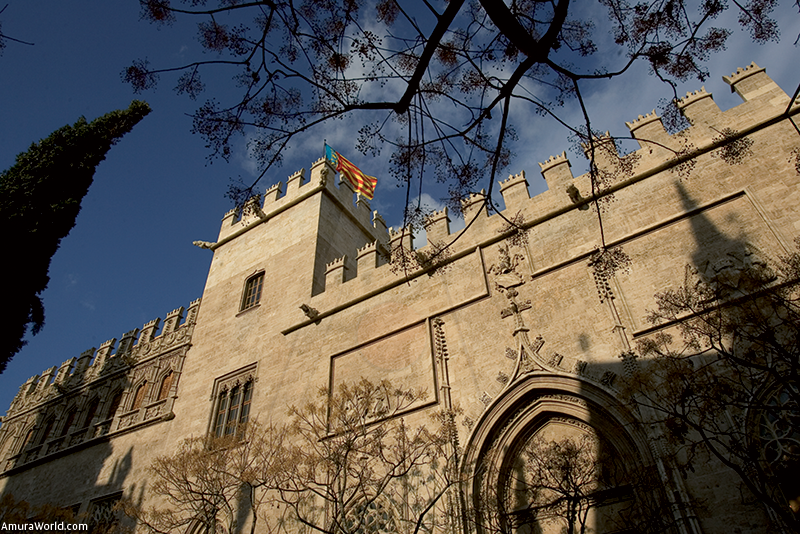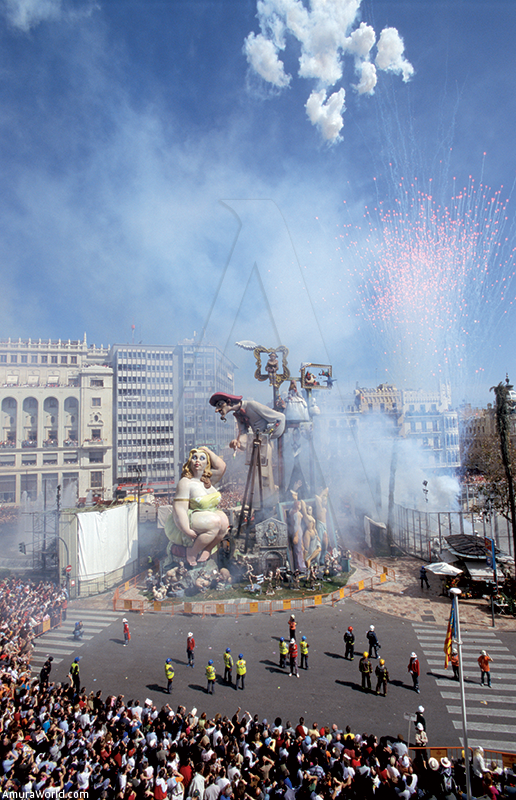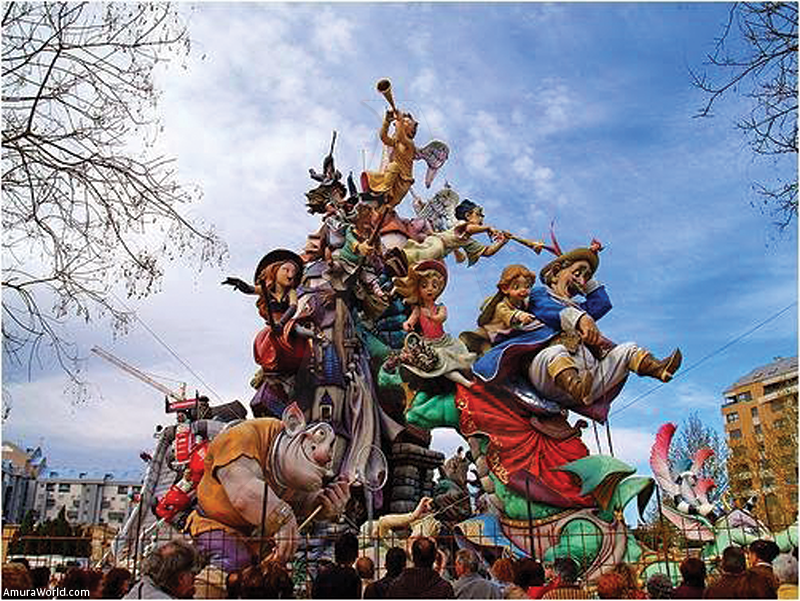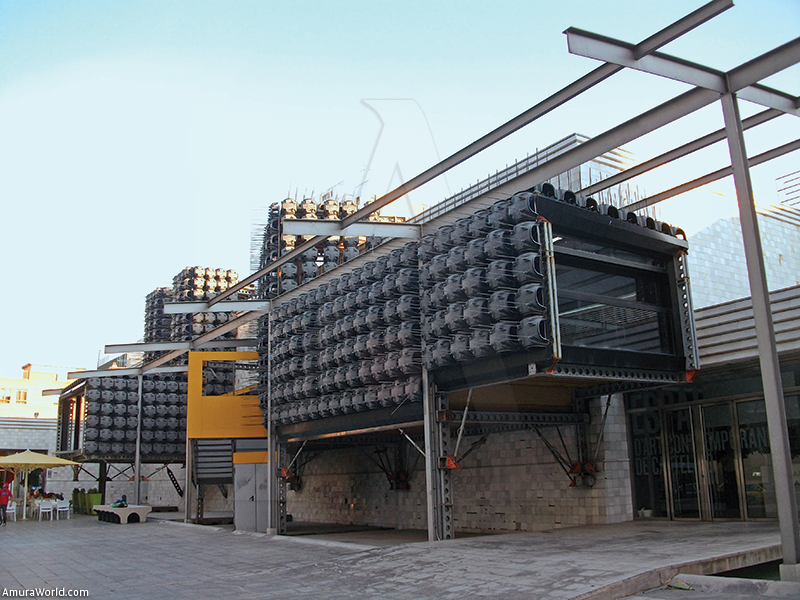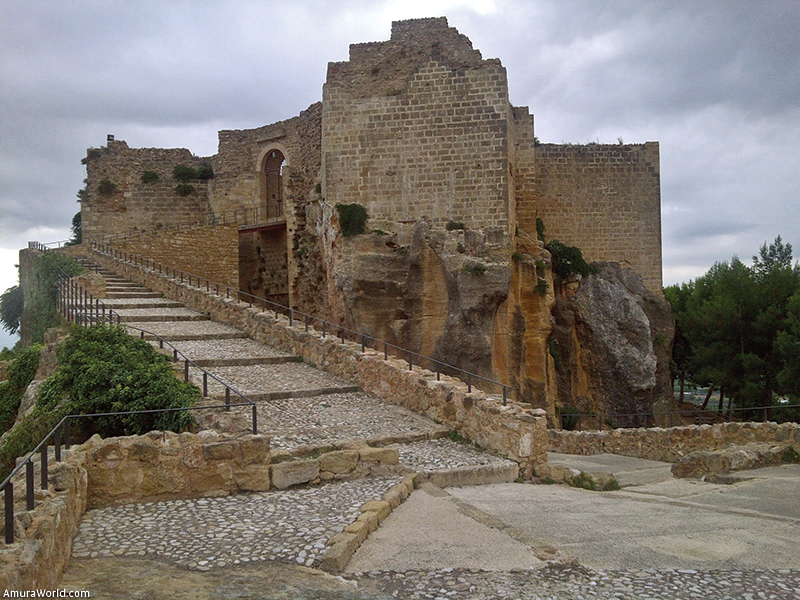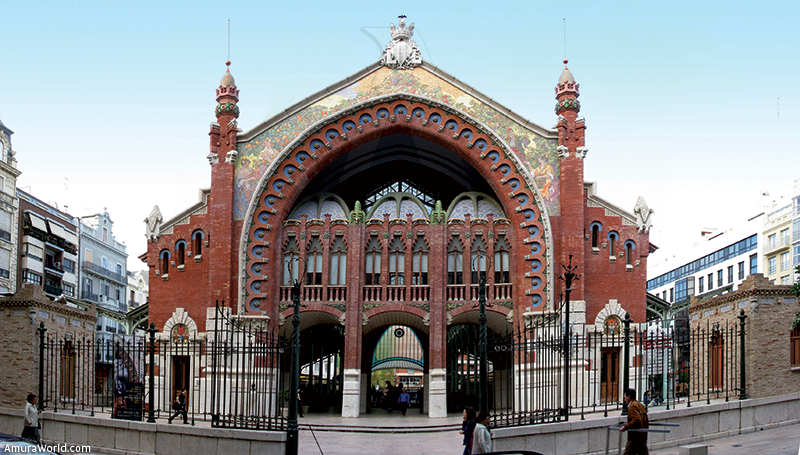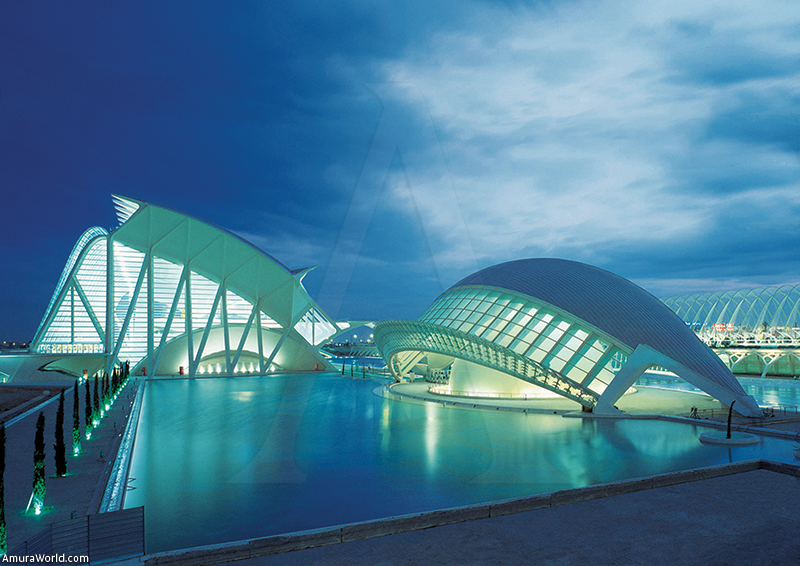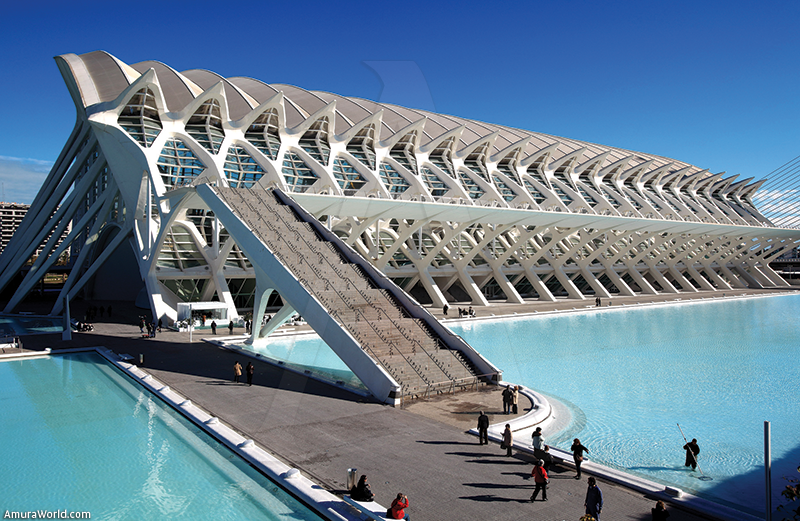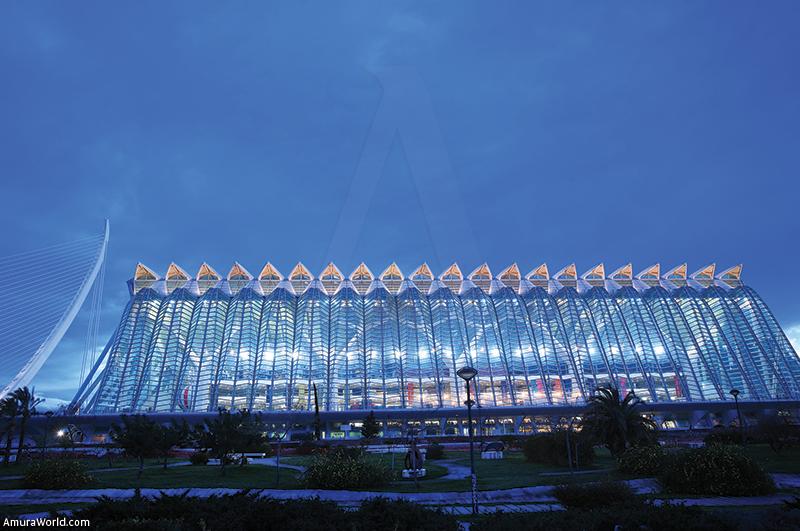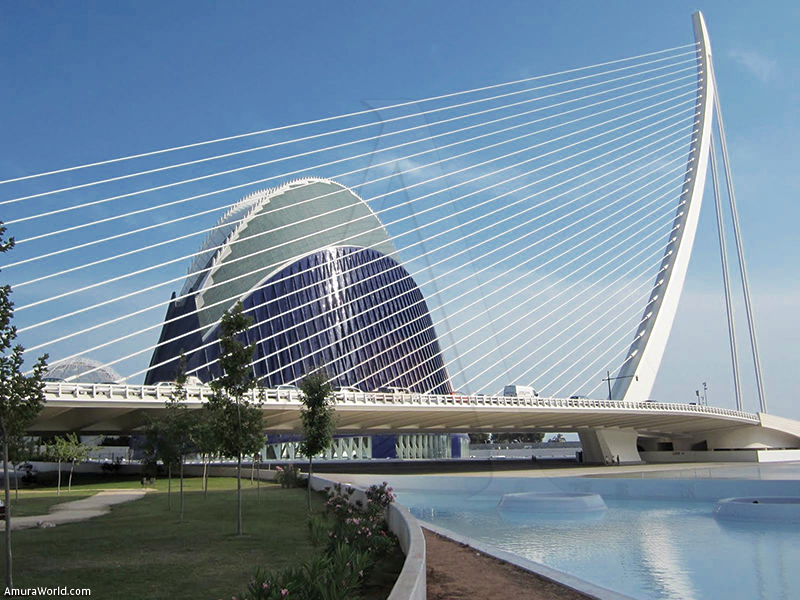House for various peoples and civilizations
The first inhabitants were the Iberian tribes in the interior hills, as Liria or Sagunto; later, during the Second Punic War (218 – 212 BC) the Romans and the Carthaginians fought over the ownership of the coast, winning at the end the formers. The Roman Legions pacified the Iberian Peninsula and, after winning over the Lusitan (later on to be Portuguese), they founded Valencia in an Island of the Turia river. They divided the cropland, and built for the city a forum, a circus, a market and the administrative bar.
The Visigoth left as their legacy beautiful basilicas in the honor of Saint Vincent Martyr, who planted the seed for Christianity with his martyrdom towards 304 AC.
The Arabs were the protagonists of the next wave of invasions of this beautiful coast, being responsible for the irrigation system based on eight large channels or ditches that would bring fame, wealth and prestige to its rich cropland. They created the Water Court, which meant that every Thursday at noon the elders got together at the door of the Main Mosque and verbally judged the use and the abuse of water in their fertile land.
On October 9th of 1238, the troops of James I of Aragon entered the city and took the power away from the Arabs.
The newly arrived reinstated Christianity, built a beautiful gothic Cathedral, built the impressive silk market as homage in Stone to good commerce amongst peoples, who respect the given word.
The Modern Age brought out the export vocation in the Valencian entrepreneur, who from the beginning of the XVIII century began to bring to Northern Europe tons of that Golden, sweet-and-sour flavored and wrinkled- skinned magnificent fruit known as the Valencian orange. Public monuments were built as homage to progress, such as the modern Mercado de Colón (Columbus Market) in Gaudi style, the impressive Central Market which is the second largest in Europe, the elegant North Station and the Port Sheds.
During the XX century a terrible destructive flood hit the city, of which it came out victorious to build the beautiful park of the Turia River and the surprising City of the Arts and Sciences.
Horizon of an autonomous will
The region where the Valencian Community is set today, formed by three provinces: Alicante, Castellón and Valencia, offers magnificent views. It includes a narrow mountain range that slopes down towards the coastal valley that covers 632 km, making it the widest of Spain. This Mediterranean region, due to its excellent weather, invites us to enjoy its beaches all year long. However, this is not all you can enjoy in the Comunitat, for all the great cultures that inhabited this land left traces of their presence. Due to their 8-centuries dominion, the influence of the Moor is the strongest of all, from Agriculture to Gastronomy. Because of this multicultural influence, the holidays and festivities celebrated here are so colorful and diverse, besides having historical relevance, so much so that they have been declared as of international tourist interest, being the most important the Fallas, the Moors and Christians and the Holy Week. The Valencian Community offers unique and characteristic places that have traditions that marvel any tourist.
The palpitation of Alicante
Southeast of the Valencian Community is the Costa Blanca (White Coast), with its enchanting beaches, inviting you to enjoy holidays and activities such as golf, but that also brings an important cultural offer, such as the Archaeological sites that are part of the Mediterranean Arch that stands witness to the post-Paleolithic prehistoric society that lived there, and makes Spain proud to be part of the World Heritage declared by the UNESCO. A stroll through the streets of the old Quarter of Alicante, commonly known as El Barrio, and by its port, offers the possibility of reencountering the Architectonic history of the city, for, due to the diversity of styles that form it, Alicante is considered a destination where modernity unites with tradition.
At the top of Mount Becantil, a silent lookout, the Saint Barbara Castle, protects the territory. This fortress, though Arab in origin, keeps the traces of the civilizations that passed through Alicante, being the strongest influence that of the XVI century Architecture. In this place you can appreciate a beautiful view of all the area.
At the base of the mountain you can find what once was a fortified city, its narrow streets still have the flavor of ancient times, with plenty of interesting constructions and monuments. Some of the most outstanding are: the Museum that exhibits the work of contemporary artists such as Dali, Chagall and Picasso amongst others, and that occupies the House of the Insured, located in front of the Basilica of Saint Mary, which was built on top of the Main Mosque (as happened in Valencia and other locations), the oldest in Alicante; The Co-Cathedral of Saint Nicholas, built in the XIII century, keeps very few elements of its original construction, but exhibits its baroque inheritance of the XVII century; the outside view is sober, however the inside leaves the visitors fascinated, especially when going into the Communion Chapel.
The old quarter of the city, as the sun goes down, exhibits its bohemian character with bars and cafeterias invite to the social gatherings and to live the festive environment of this part of the city, which is livelier during summer time, especially in the port.
Beaches
The coast of Alicante contrasts with the intense blue of the Mediterranean Sea and its inhabitants usually brag they have the best shores of the Valencian Community, perfect for relaxing by the sea. Some of the best beaches are: Postiguet Beach, with its large length of white sands and considered as the second largest beach in Alicante, it has a promenade with bars and cafeterias; the Cala Granadella is a beach of gravel that invites to practice snorkel and scuba diving; Carabassi, in the South, is a place visited in Summer time for its easy Access; in Albufereta, of smooth waters and easy access, there are Archaeological sites that go beyond the foundation of the city.
Holidays and Fairs
Its most important celebrations are the Holy Week, where faith, tradition and folklore go hand in hand; during this time of the year, the coiling paving of the streets of Valencia serve as scenario for the Processions of Brotherhoods, which are prepared all year long for a one- time representation in the Holy Week; candles and flowers bedeck this solemn festivity while the music bands add a festive and yet respectful touch to it.
Moors and Christians, a representation celebrated in different regions and on different dates, commemorates the Reconquista of the Iberian lands from the Arabs. In Alicante, for example, it is celebrated on December 6th.
Saint John’s Fire, one of the most expected holidays, where the coming of Summer is celebrated, is prepared months in advance so each year it distinguishes as one of the most spectacular celebrations; this has managed to have the holiday declared of International Tourist Interest. The origins of this tradition go way back in time, to when the pagan peoples would light a big fire on the eve of the Summer Solstice, from there it jumped to the Christian tradition and during the 20’s human figures were added that, year after year, kept growing until they reached their actual sizes that generate great admiration.
Unpaired Valencia
A Mediterranean city made of history, light and color; of marine aromas, cropland fragrances, gunpowder and orange blossom. It is a land that delights the senses and opens itself, generous and extroverted to the visitor; Valencia invites you to explore it at a slow pace, gifting you in Exchange with unforgettable emotions.
You walk its streets becomes a loud experience, for the ringing of the bells of the Cathedral of Valencia, consecrated in 1238 by the King James I, the Conqueror, under the name of “Nostra Dona Santa María”, mark the vital pulse of the metropolis. Amongst all there is one that outstands because of its special strumming, it is the bell of El Miguelete or the Torre del Micalet (the Tower of the Micalet), being its ringing the one that wraps the ambience of the heart of the city, by the Queen’s plaza, from where the visit to this beautiful city starts. Surprising and privileged, very few urban nuclei can brag about being surrounded by vegetable gardens bathed with the warm waters of the Mediterranean Sea and to be side by side with a Natural Park such as La Albufera. Without doubt, the noble axis of Valencia is the elegant Street of the Knights that today, is filled with contrasts for the fusion of the refinement of its palaces with the Avant-guard environment of its stores and the night life of the Barrio del Carmen.
A blink for Valencia
The Barrio of the Seu, known before as Plaça de la Seu, one of the neural centers of Valencia, still keeps the trace of the roman urbanism in the streets that arrive to it. There, in the heart of the Historical Downtown, you can find the Cathedral and the Plaza of the Virgin, where traditionally the institutions and power estates have concentrated, which turn it into one of the historical references of the city. Very close you can find the Palau de la Generalitá; this building, that today houses the Seat of the Valencian Autonomous Government, was built in the XIV century to Seat the General Council and its tower is one of the representative symbols of the traditional image of the city. The area also brags its noble and bourgeoisie history, when on the XV century in the Palau de les Corts, better known as the Borgia Palace, today converted into the Valencian Parliament, lived the noble family.
In the plaza of Alms, or Plaça de l’Almonia, considered the oldest in town, under which the remains of the city that was there during the era of the Republican as well as the Imperial Rome. Today, that space is occupied by the Archaeological rests within a museum complex. Another silent witness of the past is the beautiful Archaeological Crypt of the jail of Saint Vincent Martyr, a funereal chapel under what used to be the house of the Chantre until its seizure in 1835.
To walk by its streets brings back the memory when, after the invasion of the Iberian Peninsula by the Muslim troops that came from Northern Africa, it was known as Balansillá. There were five centuries (of the eight that lasted the Arab dominion) that passed to transform the traditions and look of the city, but it is in the view of the land won to the water where the deepest print remains: the cropland and its irrigation.
The passing of time also left its trace, like the Battle of Puig in 1237, where the King James I takes the last step towards the conquest of Valencia, conceived years before, and that with its incorporation to the Crown of Aragón, would turn the King of Valencia into the capital of the new Christian Reign.
Outside the Valencian nucleus, the Street of Saint Vincent serves as a guide to the Saint Martin Church, one of the Parishes built over old Mosques of the XIII century; at the same time it takes you to the Market, with its origins going back to the Islamic era and which conformed the commercial nucleus until the XX century, when the Central Market was built, which, today, is the second largest in Europe. A special place has the Silk Market, an Architectonic jewel of the city and part of the World Heritage since 1996.
Merciless print
Where yesterday there were mosques, today there are churches that are looking forward to silencing the memory of the defeated. The best example of this raises in front of the eyes of the visitors, the Cathedral of Valencia that was built on top of the Main Mosque. There are various legends around its consecration; the best known coincides with the account of Josef Teixidor in his book Antiques of Valencia where he says that King James I, armed with a silver hammer, damaged the walls of the Muslim temple, task to which other men joined, so in a few hours, the mosque would be totally ruined. However, this is a myth, for in reality the mosque functioned as cathedral until the construction of the actual temple which took several stages, from 1262 until the XIX century, turning it into a wonderful synthesis of the city history as well as the sum of the best Valencian architecture of all times. And so does the Roman memory becomes present in the Puerta del Palau (Door of the Palace): the elegance of the gothic is in the Door of the Apostles, where every Thursday the Court of Waters gets together since the year 880; the Renaissance novelty of the Obra Nova (new work) can be appreciated in the beautiful Aula Capitular (City Hall); the audacious prodigy of the gothic can also be appreciated in the Cimborrio Octagonal l (Octagonal Base of the Cupola), work of Martí Llobet; the spectacular drama of the Baroque welcomes the parishioner in the Puerta del Cerros (Door of the Cerros). This is a majestic construction.
Levantine Feast
There are some places by the beaches of Valencia that are quite surprising because they are older than 120 years. Malvarrosa, one of the main beaches, offers several places where you can have a refreshing drink, such as the Agua de Valencia, while you enjoy the view of the Gulf of Valencia.
The most important celebration is known as the Felles or Fallas, dedicated to the arrival of the Spring, celebrated on the day of Saint Joseph (March 19th) when the previously created wood and cardboard sculptures are set on fire; during the whole week Valencia lives a carnival that is festooned with bull fights. This is a tradition inherited from the old carpenters, who received the Saint Joseph day –their patron saint- by burning the pedestals and old wooden tools that they used to hold in place the oil lamps they used in winter time either in front of their workshops or in the main plaza.
Castellón the ambivalent
Castellón is the province with more mountains in the Valencian Community and the second in Spain. Its coast also reflects a large territory for it has approximately 120 km of beautiful beaches that the tourists enjoy. A large number of them with blue flags, which means they are singularly beautiful and have been kept pollution-free. The best beaches of this province are the ones of Morro de Gos.
It is said that this is an ambivalent destination due to its contrasts, on one hand it is framed by an unpaired natural richness and on the other hand outstands the cultural attraction that goes from the prehistoric art, which is so important that it was included in 1998 on the list of the World Heritage by the UNESCO, to the Avant guard art of the Espai d’art contemporani de Castelló (EACC) (Space for Contemporary Art of Castellón), opened in 1999 as part of the Castellón Cultural Project which, through an exhibitions program, communicates the cultural life of the city.
Besides, in the city can be appreciated remains of the Roman Architecture that mix perfectly with the Valencian Modernism. For example, a place that shows this disparity is the Museu de Belles Arts de Castelló (Museum of Fine Arts of Castellón), a modern building where a collection of historic art that goes from the Paleolithic era to the Middle Ages is exhibited; there is also the Museo de la Cerámica de l’Alcora (Alcora Museum of Ceramic) where pottery and other ceramic works from the XVIII century until today are exhibited.
The town of Morella is a mandatory stop so you can admire the ancient castle built on a crag by the old Levantine or Iberian, as the Greeks called them. Today it is worth appreciating the fortress that during the Moors era was of great importance, and to spend some time in front of its walls with its 2.5 km in length, complemented by the 14 towers and six doors amongst which the gothic Door of Saint Peter. Also, it houses some Offices, such as the Governor Palace, the prisons, the parade ground or the Celoquia tower. For some time it functioned as a prison where the Infante Alfonso de la Cerda in 1288; Margarita de Monferrato (1364-1420) Countess of Urgell and mother of James II of Urgell, between 1414 and 1420, and the prince Carlos de Viana from 1460 to 1461, were incarcerated.
Mandatory Stop
The City of the Arts and Sciences is an ample Architectonic complex formed by L’hemisferic, the first enclosure opened to the public in 1998. It is a building in the form of an eye, one of the characteristic designs of the Architect Calatrava, inside of which an incredible 900 m2 and 24 m in diameter IMAX Theater. The Prince Phillip Museum of Sciences opened in 2000, has ample inside and outside areas and is dedicated to the Natural Sciences, though it also functions as Seat for different social and cultural events of the city. L’Oceanogràfic that opened in 2002 is a complex of almost 100,000 m2, conceived by the Architect Félix Candela that represents the various marine ecosystems. The Palau de les Arts Reina Sofía (Queen Sofía Palace of the Arts), is a majestic building that is presented as a great sculpture of a high symbolic content. The last big component of this development that in 2007 turned into one of the twelve treasures of Spain, is the Agora, located between the l’Assut de l’Or bridge and l’Oceanogràfic.
The Entry of Bulls and Horses is a popular festivity celebrated in Segorbe during the second week of September, and consists of 12 horsemen crowding around and guiding a herd of Bulls through the Colon Street all the way to the plaza de la Cueva Santa (Holy Cove plaza) with no more protection than that of their horses. Its importance is such that it has been declared of International Tourist Interest. That is why today the Center of Interpretation of the Entry of Bulls and Horses is a museum where every day of the year it is recreated the essence of such celebration. In the first story of the building, you start going through the various scenarios of the festivity: the river, the ascent through the Rialé, the reunion and the run; other halls show in a large exhibition the main elements: the horse, the bull, the horseman, and the clubs. All is complemented with a projection that takes the participant to the past century and shows all the elements that are still maintained of the festivity. In the second story there is the exhibition Hall and a projection room where the visitor enjoys the thrill of the Entry of Bulls and Horses of Segorbe while watching on five simultaneous screens the images and sounds that are characteristic of this festivity.
Text: Vicente Niclos Albarracin / Jesus Peraza ± Photo: WPS / las providencias / living valencia / BUNGALOWS / GUIDO VALENCIA / JULIE LOB / VENTS FESTA / SPAIN COAST / Javiewr Guijarro / Vibotest / NACHO BARCO ALICANTE YE / TRES IRADAS / MOROS

